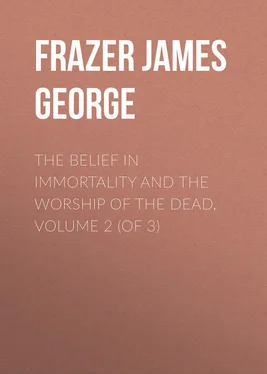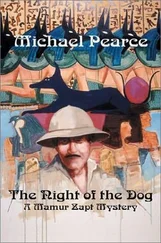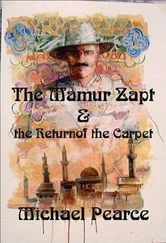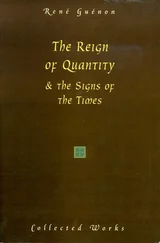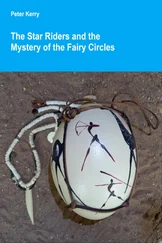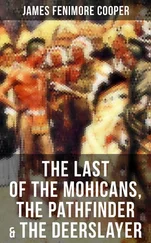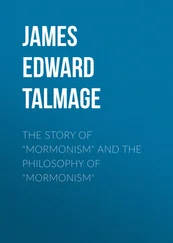James Frazer - The Belief in Immortality and the Worship of the Dead, Volume 2 (of 3)
Здесь есть возможность читать онлайн «James Frazer - The Belief in Immortality and the Worship of the Dead, Volume 2 (of 3)» — ознакомительный отрывок электронной книги совершенно бесплатно, а после прочтения отрывка купить полную версию. В некоторых случаях можно слушать аудио, скачать через торрент в формате fb2 и присутствует краткое содержание. Жанр: foreign_antique, foreign_prose, на английском языке. Описание произведения, (предисловие) а так же отзывы посетителей доступны на портале библиотеки ЛибКат.
- Название:The Belief in Immortality and the Worship of the Dead, Volume 2 (of 3)
- Автор:
- Жанр:
- Год:неизвестен
- ISBN:нет данных
- Рейтинг книги:3 / 5. Голосов: 1
-
Избранное:Добавить в избранное
- Отзывы:
-
Ваша оценка:
- 60
- 1
- 2
- 3
- 4
- 5
The Belief in Immortality and the Worship of the Dead, Volume 2 (of 3): краткое содержание, описание и аннотация
Предлагаем к чтению аннотацию, описание, краткое содержание или предисловие (зависит от того, что написал сам автор книги «The Belief in Immortality and the Worship of the Dead, Volume 2 (of 3)»). Если вы не нашли необходимую информацию о книге — напишите в комментариях, мы постараемся отыскать её.
The Belief in Immortality and the Worship of the Dead, Volume 2 (of 3) — читать онлайн ознакомительный отрывок
Ниже представлен текст книги, разбитый по страницам. Система сохранения места последней прочитанной страницы, позволяет с удобством читать онлайн бесплатно книгу «The Belief in Immortality and the Worship of the Dead, Volume 2 (of 3)», без необходимости каждый раз заново искать на чём Вы остановились. Поставьте закладку, и сможете в любой момент перейти на страницу, на которой закончили чтение.
Интервал:
Закладка:
James George Frazer
The Belief in Immortality and the Worship of the Dead, Volume 2 (of 3) / The Belief Among the Polynesians
PREFACE
The first volume of this work, which comprised the Gifford Lectures given by me at St. Andrews in the years 1911 and 1912, dealt with the belief in immortality and the worship of the dead, as these are found among the aborigines of Australia, the Torres Straits Islands, New Guinea, and Melanesia. In the present volume I take up the subject at the point at which I broke off, and describe the corresponding belief and worship among the Polynesians, a people related to their neighbours the Melanesians by language, if not by blood. The first chapter formed the theme of two lectures delivered at the Royal Institution in 1916; the other chapters have been written for lectures at Trinity College, Cambridge, in 1921 and 1922. But in the book the lecture form has been discarded, and the treatment of the subject is somewhat fuller than comports with the limits imposed by oral delivery.
Should circumstances allow me to continue the work, I propose in the next volume to treat of the belief in immortality and the worship of the dead among the Micronesians and Indonesians.
J. G. FRAZER.No. 1 Brick Court, Temple, London, 19th July 1922 .
CHAPTER I
THE BELIEF IN IMMORTALITY AMONG THE MAORIS
§ 1. The Polynesians
The Polynesians are the tall brown race of men who inhabit the widely scattered islands of the Pacific, from Hawaii on the north to New Zealand on the south, and from Tonga on the west to Easter Island on the east. 1 1 Horatio Hale, The United States Exploring Expedition, Ethnography and Philology (Philadelphia, 1846), pp. 4 sqq ., 9 sqq. ; J. Deniker, The Races of Man (London, 1900), pp. 500 sqq.
Down to the eighteenth century they remained practically unknown to Europe; the first navigator to bring back comparatively full and accurate information concerning them was our great English explorer, Captain James Cook. Thus at the date of their discovery the natives were quite unaffected by European influence: of our civilisation they knew nothing: of Christianity, though it had existed in the world for nearly eighteen hundred years, they had never heard: they were totally ignorant of the metals, and had made so little progress in the arts of life that in most of the islands pottery was unknown, 2 2 J. Deniker, The Races of Man (London, 1900), pp. 154, 501; British Museum, Handbook to the Ethnographical Collections (1910), p. 147.
and even so simple an invention as that of bows and arrows for use in war had not been thought of. 3 3 Captain James Cook, Voyages (London, 1809), v. 416; W. Mariner, Account of the Natives of the Tonga Islands , Second Edition (London, 1818), i. 67; W. Ellis, Polynesian Researches , Second Edition (London, 1832-1836), i. 220; E. Shortland, Traditions and Superstitions of the New Zealanders , Second Edition (London, 1856), p. 212; J. Deniker, The Races of Man , p. 501. In Polynesia "the bow was not a serious weapon; it was found in some islands, e. g. in Tahiti and Tonga, but was principally used for killing rats or in shooting matches" ( British Museum, Handbook to the Ethnographical Collections , p. 153). As to the limited use of bows and arrows in Polynesia, see further E. Tregear, "The Polynesian Bow," Journal of the Polynesian Society , vol. i. no. 1 (April 1892), pp. 56-59; W. H. R. Rivers, The History of Melanesian Society (Cambridge, 1914), ii. 446 sqq.
Hence their condition was of great interest to students of the early history of man, since it presented to their observation the spectacle of a barbaric culture evolved from an immemorial past in complete independence of those material, intellectual, and moral forces which have moulded the character of modern European nations. The lateness of their discovery may also be reckoned a fortunate circumstance for us as well as for them, since it fell at a time when scientific curiosity was fully awakened among us, and when scientific methods were sufficiently understood to allow us to study with profit a state of society which differed so widely from our own, and which in an earlier and less enlightened age might have been contemplated only with aversion and disgust.
The question of the origin of the Polynesian race is still unsettled, but the balance both of evidence and of probability seems to incline in favour of the view that the people are descended from one of the yellow Mongoloid races of South-Eastern Asia, who gradually spread eastward over the Indian Archipelago and intermingling to some extent with the black aboriginal inhabitants of the islands formed the lighter-tinted brown race which we call the Polynesian. 4 4 Compare (Sir) E. B. Tylor, Anthropology (London, 1881), p. 102; R. H. Codrington, The Melanesian Languages (Oxford, 1885), pp. 33 sqq. ; S. Percy Smith, Hawaiki, the Original Home of the Maori (Christchurch, etc., New Zealand, 1910), pp. 85 sqq. ; A. C. Haddon, The Wanderings of Peoples (Cambridge, 1919), pp. 34 sqq. ; A. H. Keane, Man Past and Present , revised by A. Hingston-Quiggin and A. C. Haddon (Cambridge, 1920), p. 552.
A strong argument in favour of this theory is drawn from the Polynesian language, which belongs essentially to the same family of speech as the Melanesian and Malay languages spoken by the peoples who occupy the islands that intervene between Polynesia and the south-eastern extremity of the Asiatic continent. 5 5 On the affinity of the Polynesian, Melanesian, and Malay languages, see R. H. Codrington, The Melanesian Languages (Oxford, 1885), pp. 10 sqq. ; S. H. Ray, "The Polynesian Language in Melanesia," Anthropos , xiv. – xv. (1919-1920), pp. 46 sqq.
The black Melanesian race occupies the south-eastern portion of New Guinea and the chain of islands which stretches in a great curve round the north-eastern coasts of New Guinea and Australia. The brown Malays, with the kindred Indonesians and a small admixture of negritoes, inhabit the islands westward from New Guinea to the Malay Peninsula. 6 6 J. Deniker, The Races of Man , pp. 482 sqq.
Of the two kindred languages, the Polynesian and the Melanesian, the older in point of structure appears unquestionably to be the Melanesian; for it is richer both in sounds and in grammatical forms than the Polynesian, which may accordingly be regarded as its later and simplified descendant. 7 7 Reports of the Cambridge Anthropological Expedition to Torres Straits , vol. iii. Linguistics , by Sydney H. Ray (Cambridge, 1907), p. 528 (as to the relation of the Polynesian to the Melanesian language). As to the poverty of the Polynesian language in sounds and grammatical forms by comparison with the Melanesian, see R. H. Codrington, The Melanesian Languages , p. 11.
But whereas the three peoples, the Polynesians, the Melanesians, and the Malays speak languages belonging to the same family, their physical types are so different that it seems impossible to look on the brown straight-haired Polynesians and Malays as pure descendants of the swarthy frizzly-haired Melanesians. Accordingly in the present state of our knowledge, or rather ignorance, the most reasonable hypothesis would appear to be that the Melanesians, who occupy a central position in the great ocean, between the Polynesians on the east and the Malays on the west, represent the original inhabitants of the islands, while the Polynesians and Malays represent successive swarms of emigrants, who hived off from the Asiatic continent, and making their way eastward over the islands partially displaced and partially blent with the aborigines, modifying their own physical type in the process and exchanging their original language for that of the islanders, which, through their inability to assimilate it, they acquired only in corrupt or degenerate forms. 8 8 This seems to be the hypothesis favoured by Dr. R. H. Codrington, The Melanesian Languages , pp. 33 sqq. Compare J. Deniker, The Races of Man , p. 505. On the other hand Sir E. B. Tylor says ( Anthropology , pp. 163 sq. ), "The parent language of this family may have belonged to Asia, for in the Malay region the grammar is more complex, and words are found like tasik = sea and langit = sky, while in the distant islands of New Zealand and Hawaii these have come down to tai and lai , as though the language became shrunk and formless as the race migrated further from home, and sank into the barbaric life of ocean islanders." Dr. W. H. R. Rivers suggests that the Polynesian language "arose out of a pidgin Indonesian" ( The History of Melanesian Society , ii. 584).
Интервал:
Закладка:
Похожие книги на «The Belief in Immortality and the Worship of the Dead, Volume 2 (of 3)»
Представляем Вашему вниманию похожие книги на «The Belief in Immortality and the Worship of the Dead, Volume 2 (of 3)» списком для выбора. Мы отобрали схожую по названию и смыслу литературу в надежде предоставить читателям больше вариантов отыскать новые, интересные, ещё непрочитанные произведения.
Обсуждение, отзывы о книге «The Belief in Immortality and the Worship of the Dead, Volume 2 (of 3)» и просто собственные мнения читателей. Оставьте ваши комментарии, напишите, что Вы думаете о произведении, его смысле или главных героях. Укажите что конкретно понравилось, а что нет, и почему Вы так считаете.
